If you’re a shooter, you’re no doubt painfully aware that we’re in the midst of yet another product availability “crisis,” and it doesn’t look like it’s going to be resolved anytime soon. Because wild swings in the market, like this, influence all of us, I thought it would be worth a little time to discuss where we’re at, where we’re going, and what you can do about it as a RevolverGuy to make sure it doesn’t interrupt your training.
Not our first rodeo
The first place to start, I suppose, is to realize that this is not unfamiliar ground for a lot of us–we’ve definitely been here before!
The men of my Great Grandfather’s and Grandfather’s generations knew the supply interruptions prompted by World War I, the Great Depression, and World War II. Things were better for my Dad’s generation, but they still experienced minor shortages during the Vietnam years for some popular products. In example, there were times and places where it could be tough to find a Combat Magnum, Hi-Power, or 1911, because so many of them were being purchased by deploying GIs. Additionally, the social unrest that plagued America in the mid-60s to early 70s (Watts in ‘65, the Holy Week Riots of ’68, East LA Riots of ’70, etc.) also created some brief shortages.
The first supply crisis that I remember happened when the infamous “Night Stalker” was terrorizing California communities in the 1984-1985 timeframe. There were a lot of people buying guns then, and I remember some minor shortages and long lines during this timeframe—not like now, but the demand for certain products certainly outstripped the supply.
The tragic murder of five schoolchildren in Stockton, CA promoted the passage of an “assault weapons” import ban by President Bush in 1989, and the nation’s first, state-level “assault weapons” ban (the Roberti-Roos Act). These actions created demand-induced shortages, as did the 1992 Rodney King Riots Los Angeles.
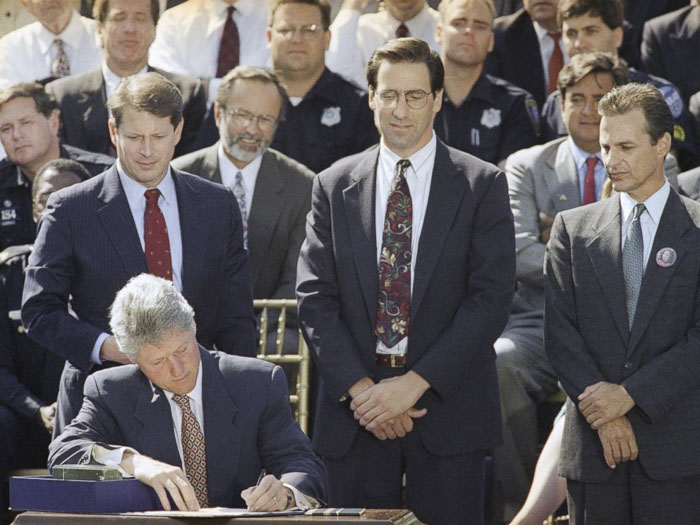
Things began to heat up we entered the 1990s, and spikes in demand for guns and ammo became more frequent and more painful. President Clinton’s signing of the Brady Law in 1993, the federal “assault weapons” ban in 1994, and his 1998 executive order banning the importation of “assault weapons,” all led to supply shortages of varying intensity, as did the push for additional gun control after the shocking, 1999 Columbine school shooting. Shortly thereafter, the Y2K leadup brought another huge spike in demand which affected the availability of popular arms and ammunition for many months.
The 9/11 attack on America precipitated another shortage, as did the 2008 election of a president that wanted to emulate President Clinton’s anti-gun accomplishments. His reelection in 2012, followed shortly thereafter by the grisly Sandy Hook Elementary School massacre, prompted an aggressive anti-gun push in 2013 that sent consumers back to the stores again, buying everything in sight.
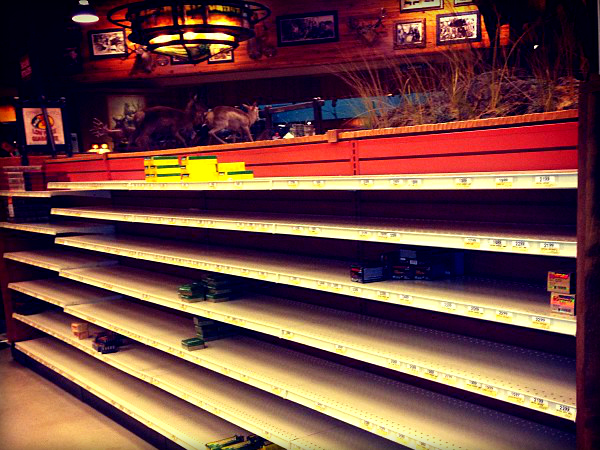
Of all the supply crises I’d seen to date, this was the one that really pegged the needle. Although conspiracy theories about the government “buying up all the ammo” were floated to explain the shortage (and actually forced a congressional investigation), the real cause of the shortage was an unprecedented level of demand, courtesy of a population of gun enthusiasts that had been steadily climbing for decades (as a result of concentrated industry efforts to promote the shooting sports, and the recruiting effect of anti-gun politics), and the newest rush of non-owners who saw this as their last chance to get in on the action, before the hand of government slammed the door shut on them.
None of us had ever seen demand, or shortages, like this before. Each day, lines of people formed up outside of gun stores (and big box stores that sold ammo), hours before they opened, so they could have first crack at whatever came in on the truck the night before. Ammunition rationing policies came into effect for the first time I could remember, and a healthy secondary market popped up, where the people who had the goods (including a lot of the “entrepreneurs” standing in the “soup lines” every morning) marked them up and resold them to those who didn’t. This resale of ammunition really became a business of its own, during this period, prompting both jeers and cheers—but mostly jeers.
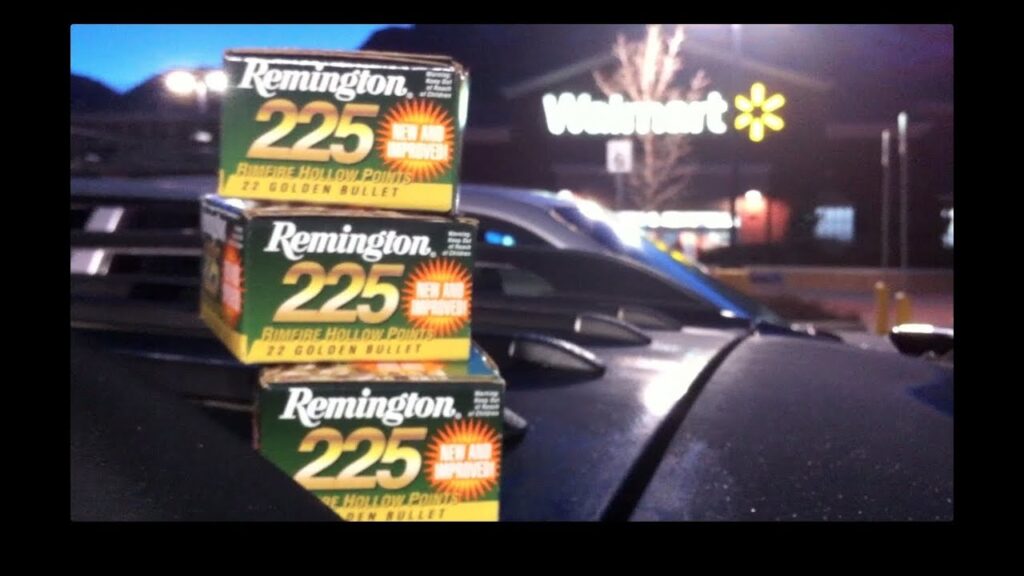
It took several years to “recover” from this supply crisis, and the “recovery” really wasn’t complete before the 2016 Presidential election was upon us, and it looked like another Clinton was going to lash out at gun owners. The 2016 spike sent us into another meltdown, as the gun-buying public figured this was really the last act before the curtain came down.1
So, yeah, we’ve seen these ups and downs in the market before. If you’re new to the gun culture, this might be your first spin on the merry go round, and it would be easy to get worked up about it, but the RevolverGuys with a little seniority on you are old pros at this. They know that if you keep your cool, the pendulum will eventually swing back in the other direction.
Much more than ammo
While much of our attention is currently focused on the lack of ammunition and firearms in the marketplace, the shortages stretch far beyond just guns and ammo.
What we’re really seeing here is an unprecedented demand for “all things gun.” The guns and ammo are the most visible part of it, but the demand for firearms accessories has also skyrocketed, leading to shortages in things you might not think about at first, like reloading equipment, holsters, optics, upgraded parts, and other popular gear.
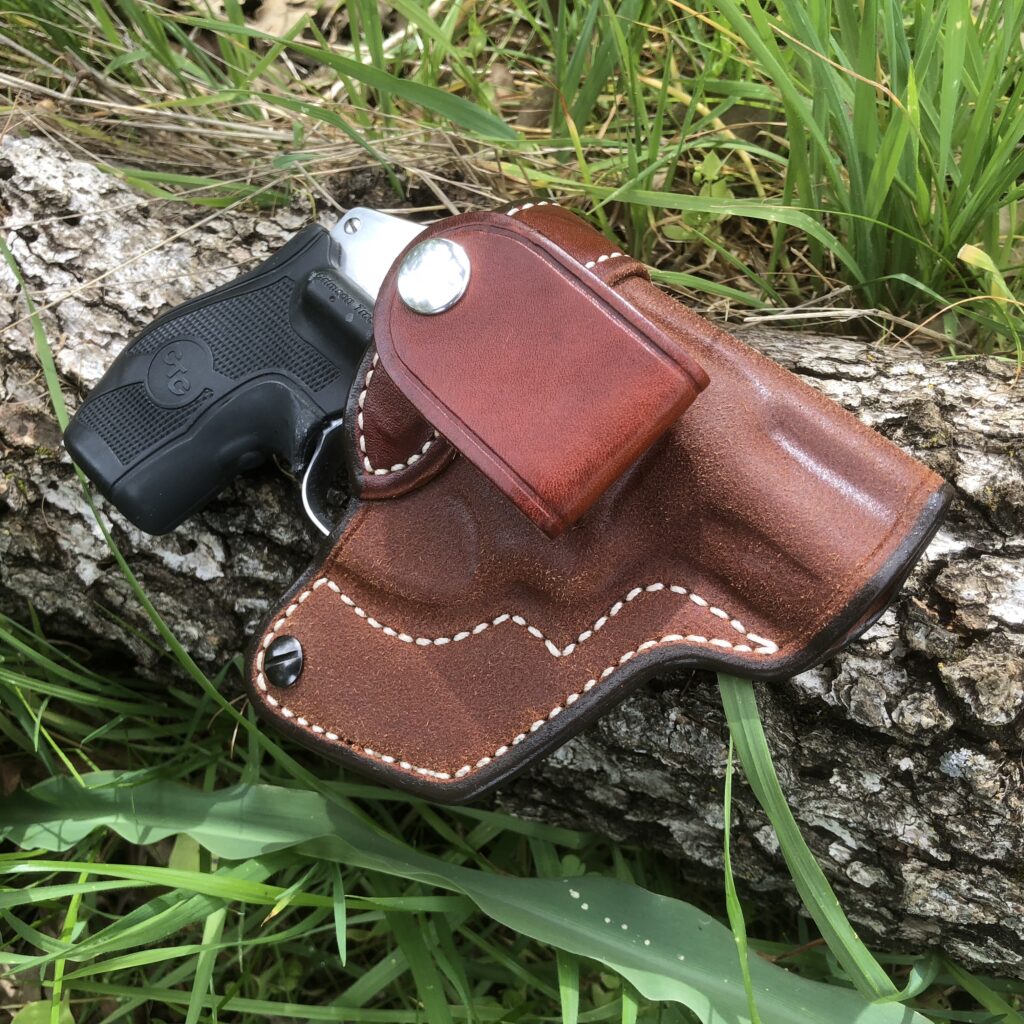
In example, this past week I contacted leather artisan Sam Andrews to discuss some custom, non-catalogued products that I wanted him to create, and learned that Sam is up to his eyeballs in orders right now, and couldn’t help. He was quite apologetic as he described the avalanche of consumer demand for his outstanding work, and regretfully explained that he just couldn’t entertain my unique request right now, because he needed to focus his effort on cranking out the mainstream products that a legion of people was waiting for.2
Although I shouldn’t have been, I was a little surprised that the current crisis had translated into extraordinary demand for custom leather, as well. I didn’t recall this sector getting hit as badly during previous crises, but maybe that’s just selective memory on my part, or maybe the continuous improvements we saw in concealed carry laws during this period are having an effect. Either way, it seems there’s no corner of the shooting world that hasn’t been touched by this latest bubble.
What’s causing the shortage?
In a word, Demand.
The unique political and social environment of the past year created an unprecedented demand for firearms and ammunition. In 2020, the Wuhan Virus (or more accurately, our response to it) and widespread political violence convinced a lot of Americans that it was time for them to enhance their security by purchasing a firearm. Similarly, many Americans were encouraged to buy guns after watching presidential candidates campaign in support of gun control, including outright calls for firearms bans and forced confiscation.
Additionally, social distancing pressures forced a lot of Americans to seek outdoor recreation activities, and many of them discovered target shooting and/or hunting, which fueled an increased demand for firearms and ammunition. It’s estimated that that over 1 million new hunters went afield in 2020, compared to 2019, as part of this rediscovery of the outdoors.

Some 8+ million Americans bought their first gun in 2020, which is really a staggering number. Overall, firearms sales showed a 60% increase over 2019 figures. That’s a whole lot of guns being sold, and even if every one of the 21+ million gun buyers in 2020 only wanted one or two boxes of ammunition for their new gun, there’s no way that the industry could have kept pace with the increased demand. But many of them didn’t want just one or two boxes, they wanted one or two cases. So did a lot of the people who already owned guns, and there’s no reasonable business model that can accommodate an unpredictable surge of that magnitude.
That’s the demand part of it. On the supply side, the Wuhan Virus caused interruptions at many levels, as companies (both domestic and international) dealt with sick employees, quarantined employees, and operational difficulties (such as temporary shutdowns, enhanced cleaning requirements, employee screening and social distancing, contract tracing, etc.) which slowed the pace of work and production. These issues delayed shipments of raw materials to firearm and ammunition companies, and hampered their ability to turn these raw materials into finished products. They also interrupted the shipping and handling of these finished products at each level, from factory, to distributor, to dealer, adding days or weeks to the movement of goods to market.

On the ammunition side, the financial difficulties faced by Remington forced them to shutter their ammunition factory for much of 2020, which was a terrific blow to the industry, as Remington is one of only four domestic operations that manufactures primers, and is one of the largest ammunition suppliers in the market. The decrease in primer and ammunition production from Remington couldn’t have come at a worse time.
Yet, despite these significant challenges, domestic ammunition companies like Federal, Speer and Hornady actually manufactured and shipped more ammunition in 2020 than they had in any prior year. They added extra shifts, kept machines working around the clock, and produced more ammunition than they ever had before. They could have shipped more, had it not been for the pandemic-inspired difficulties, but the real story of the current ammo crisis is not a failure of supply, but a story of unprecedented demand that far exceeds the available capacity.
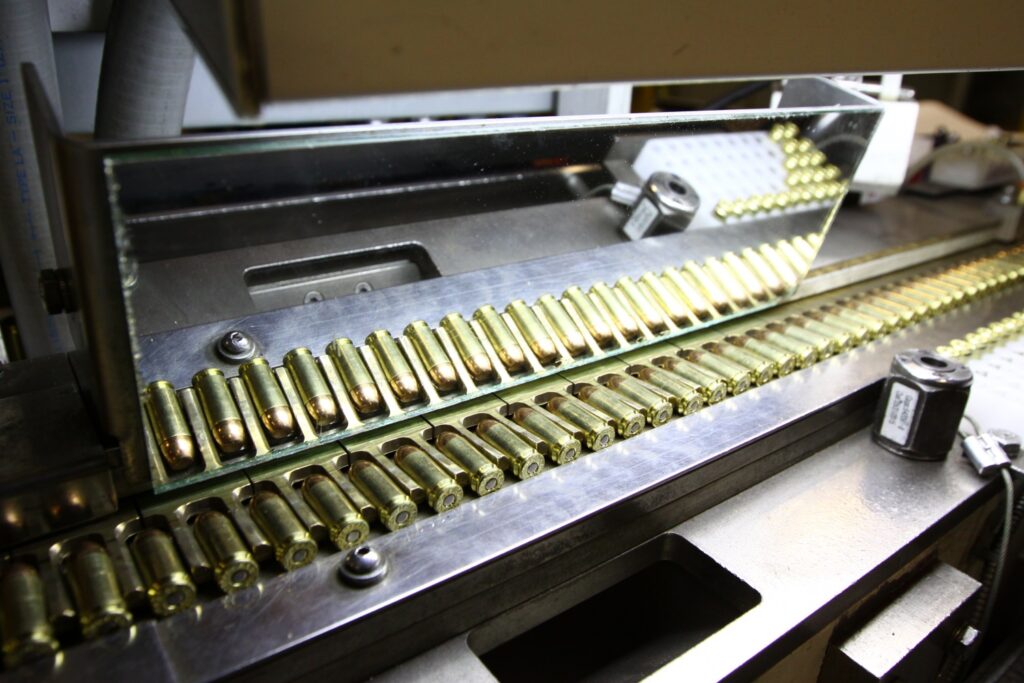
The bright side is that increased manufacturing capacity is on the way. The Remington plant was acquired by Vista Outdoor and will soon be up and running again, manufacturing badly-needed primers and factory ammunition. Fiocchi USA is expanding their ammunition plant in Little Rock, Arkansas, and new facilities from Ammo, Inc and Ranger Scientific are in the works. These new facilities, combined with the increased output from legacy plants, will eventually help the industry to catch up with demand.
Additionally, the demand will eventually subside, and return to a “new normal,” once people’s thirst has been satiated. The panic buying will stop, and people will return to buying more reasonable amounts, rather than clearing off the shelves every time they go into the store. The guy who doesn’t even have a .44 Magnum, will stop buying .44 Magnum ammo, just because it’s still there on the shelf.
When will this occur? I won’t gamble to say, other than I’m sure it won’t happen before 2022—possibly later, depending on what 2021 brings us.
Ch-Ch-Ch-Changes
Even though some of us are veterans of these crises by now, there’s always something new in each one of them that changes things up a bit.
For example, this time around, there wasn’t an early rush on magazines like we’ve seen in previous spikes. In the days of the post-Sandy Hook rush on guns, the coin of the realm was Glock and AR magazines, but we haven’t seen a similar run on these, this time around. Surely, there’s an increased demand for these products, but we’re not seeing the crippling shortages and hyper-inflated prices that we have in the past. The handguns and rifles that use them are in critically short supply right now, but the mags are still available at reasonable prices (I just found 30-round, aluminum, AR mags for $12 on a search, and Magpul Glock 17 mags for $22 each—you never would have seen that back in 2013).
Whereas previous crises placed a lot of emphasis on the supply of semiautomatic rifles like the AR and AK, more “pedestrian” guns like pump-action shotguns didn’t feel the pinch, as much. This time around though, there was an early rush on shotguns of any flavor, and the supply dried up very quickly. The previous murder of Remington by corporate bandits, lawyers, and a management team that didn’t understand the products or the gun culture, certainly didn’t help, here. When you take one of the biggest players in a market and bench it, it really hurts the supply of goods. Fortunately, it sounds like Big Green 3.0 will be up and running soon.

Speaking of shotguns, in previous crises you could usually find a pretty regular supply of target and bird hunting ammo, even if buckshot and slugs were hard to find. This time around, it seems like the target and field loads have disappeared as well, at least in my AO.
There’s been a shortage of hunting ammo for pistols and rifles too, this season. In previous events, the supply of mainstay hunting rounds was a little strained, but you could still find something to hunt with. However, the large influx of hunters over the past few years, fueled in part by a COVID-inspired boom, has placed a huge demand on hunting ammo, too. With more hunters chasing the ammo supply, and manufacturers having to ration production time for hunting ammo, just to keep up with the demand for self-defense and training ammo, it’s just harder to find hunting ammo this year. Even powder and pellets for muzzleloaders are hard to find in the current market rush, and they’re commanding highly-inflated prices.
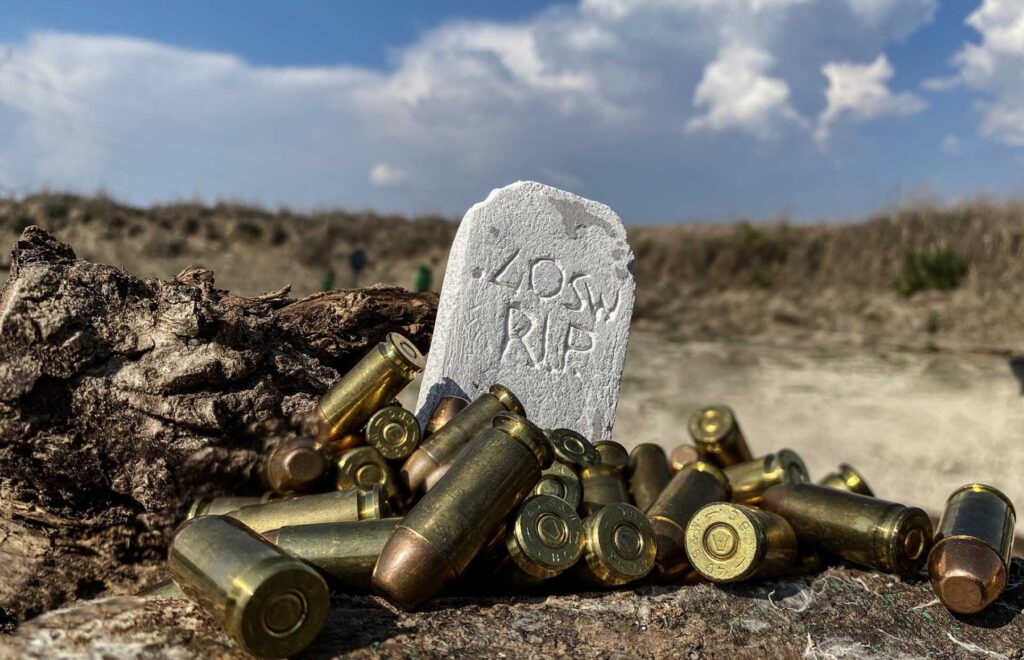
Caliber trends have changed a bit in the current crisis. I remember during the post-Sandy Hook (2013) rush, you were shoot outta luck if you wanted .22 LR, .380 ACP, .38 Special, 9mm, .357 Mag, or .45 ACP ammo for your handgun, but if you owned a .40 S&W or a .357 Sig, you were in Fat City—you could get all you wanted. This time around, the .40 S&W disappeared pretty early, right after the 9mm supply dried up. In fact, I won’t be surprised if the legion of gun writers who spent the last few years telling us that ,“the .40 S&W is dead,” have to go back and eat a little crow, as it seems the buying surge inspired by the Wuhan Virus and the “Summer of Love” have given the cartridge a new lease on life (shades of the 10mm renaissance?). Even all those police trade-ins, which had been languishing on the shelves for several years, as agencies dumped their .40s for 9mms, quickly disappeared in the rush of 21+ million people who bought firearms in 2020.
Training
With over 8 million people buying their first guns in 2020, we’d expect (hope) to see a lot of these newbies seeking training, and sending lead downrange at public shooting ranges.
Unfortunately, the ammo shortages and pandemic fears are putting a damper on live fire training. In many parts of the country, shooting ranges have been closed by health officials, or forced to operate at minimum capacity, which has deprived gun owners of the opportunity to practice with their firearms. Additionally, the increased cost and difficulty of obtaining ammunition has encouraged a lot of gun owners to stay home and ration their limited supply.
As a result, many shooters are not training with their firearms at all. That’s a huge problem, as the gun solves nothing by itself—it demands a trained and skilled person to use it–and the path to safe and responsible gun ownership lies in proper training.
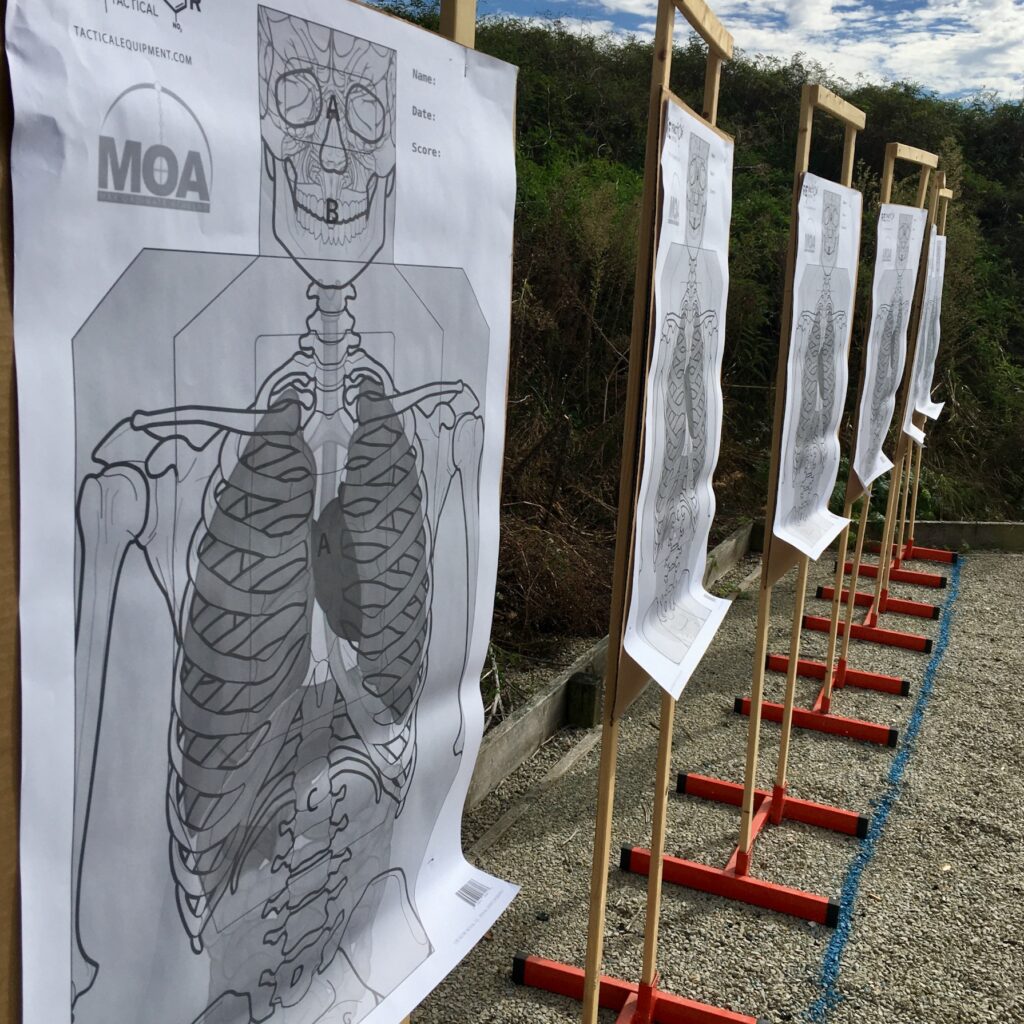
That doesn’t mean that you have to burn up a lot of ammo. Some of the most effective firearms training can be accomplished “dry,” without firing live ammunition. With careful dry practice, a shooter can work on just about every shooting skill in the book, with the exception of recoil management. A host of training tools and guides are available to help with this, including dummy ammunition, dedicated training guns (including laser, airsoft and airguns), and laser-based target systems.
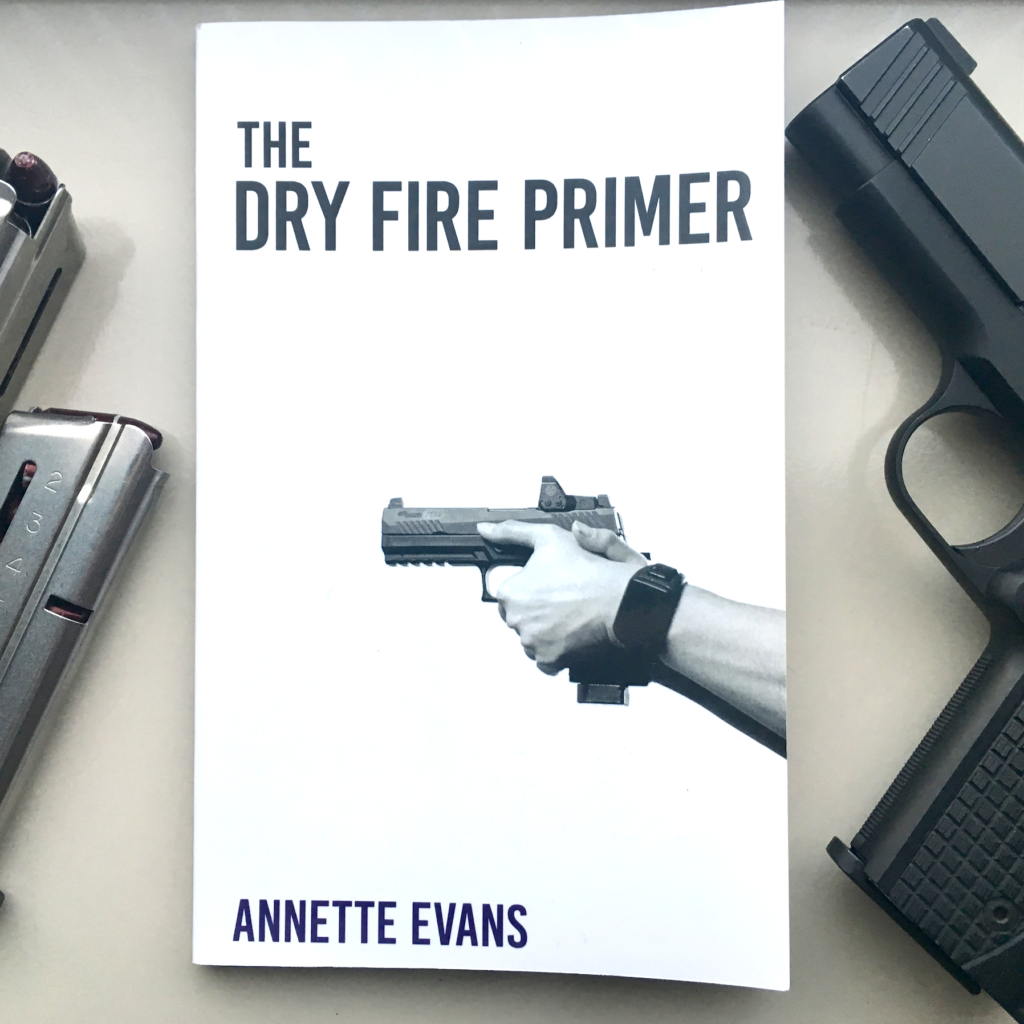
Additionally, savvy firearms instructors, like Mike Seeklander, have created online training classes to help fill the void. These virtual classes have enabled students to get professional-level training while still complying with health mandates, or eliminating their concerns about close social contact.
Other groups, like the United States Concealed Carry Association (USCCA), have also seen an increased demand for training, and have been busy offering online training programs to gun owners all over the nation, creating huge spikes in virtual training. The same goes for Gun University, with their Gun 101 program aimed at educating new gun owners.
The manufacturers have also responded with online training programs and resources specifically aimed at first-time gun owners, such as Smith & Wesson’s Gunsmarts program, and Ruger’s New Firearm Owner Resources page.
Revolvers to the rescue!
Fortunately for us RevolverGuys, a double action revolver offers several advantages for a shooter who wants to train during an ammunition shortage like the one we’re experiencing (see, you knew I’d eventually get around to talking about revolvers!).
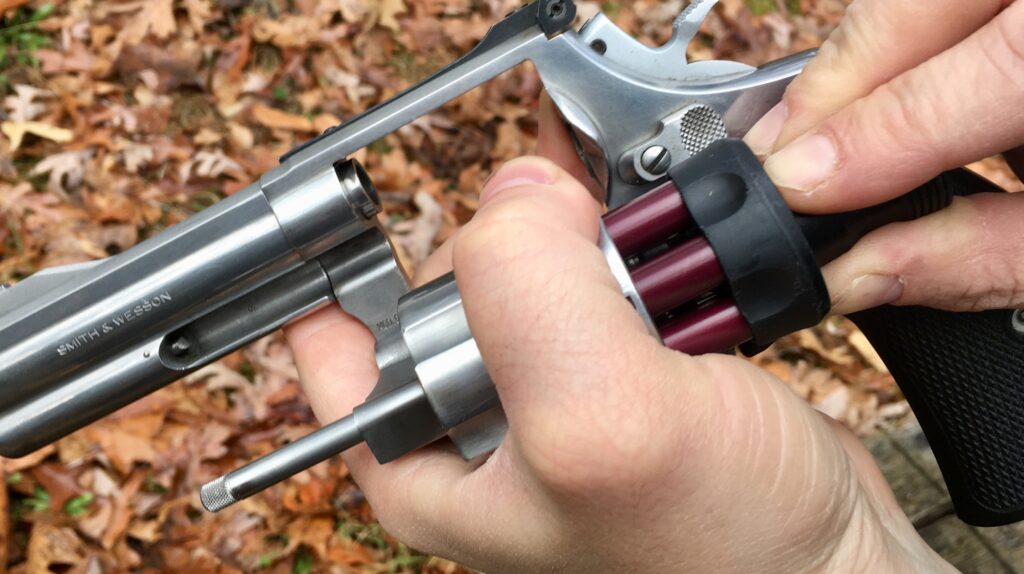
The first is that the mechanical nature of the gun’s action makes it a perfect training tool for dry practice. Because autopistols rely on the cycling of the slide to reset the gun’s action for the next shot (or to reset it to single action mode, on DA autos), and this only happens when you fire real ammunition, the shooter is required to manually run the slide during dry practice to reset the trigger.3 Adding this extra step after every trigger press in your dry practice regimen is not only a nuisance, it can help to build habits or “training scars” that will interfere with your live fire performance.
In contrast, the operation of a DA revolver does not change when you conduct dry practice. With a DA revolver, you pull the trigger the same way in both dry practice and live fire, with no additional steps. This consistency is a huge advantage for the revolver, which allows you to “train like you fight.”
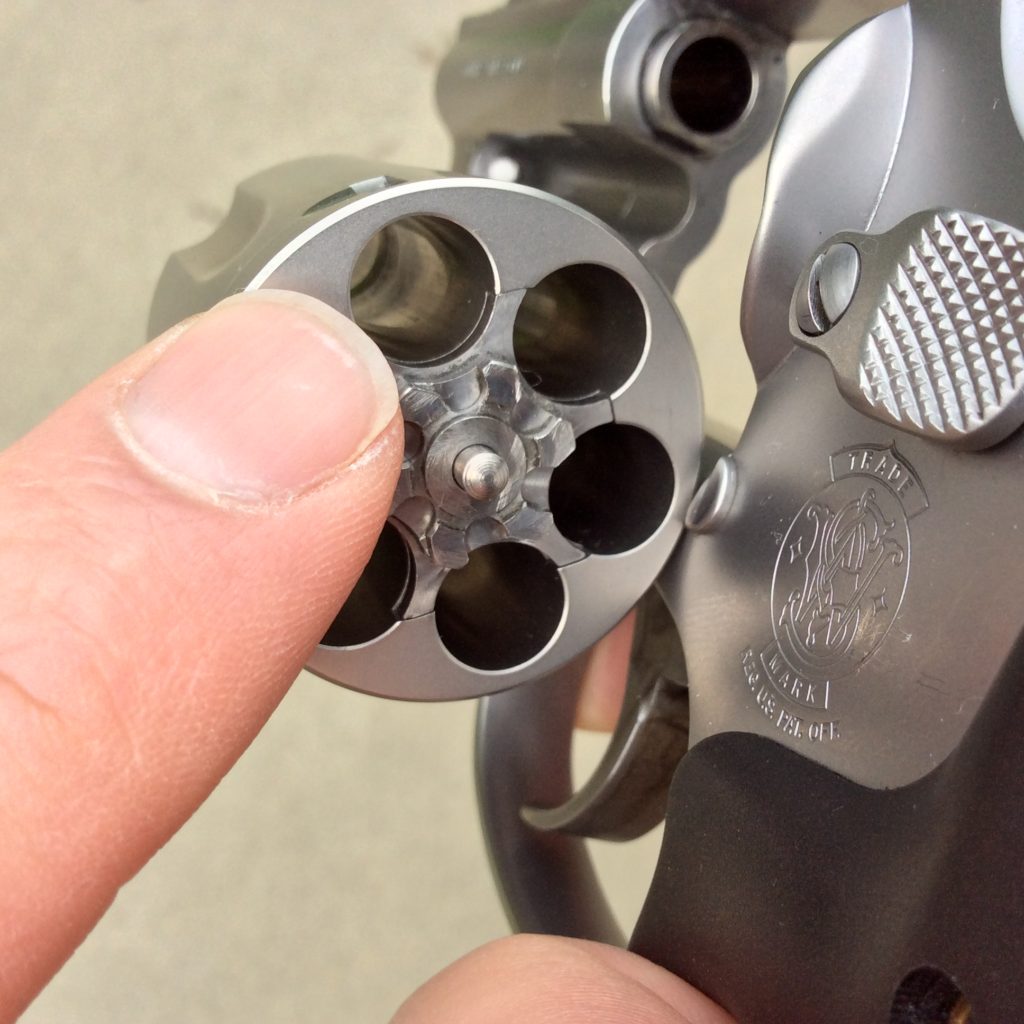
While we’re talking about dry practice, we should note that a revolver is easier to ready for this kind of training than an autopistol. It’s easy to open the revolver’s cylinder, and safely ensure the weapon is unloaded, prior to beginning dry practice. With an autopistol, it’s a little more complicated, as both the chamber and magazine must be cleared of ammunition—a process fraught with increased risk, as the extra holes in the walls, ceilings and floors of many police stations and shooting ranges will attest.
Revolver Ammunition considerations
The double action revolver offers another significant training advantage over an autopistol, in that your precious duty ammunition won’t take as much of a beating when you unload your gun repeatedly for dry practice. This can be a huge advantage in the middle of a crisis that might prevent you from easily, or affordably, replacing the duty ammo.
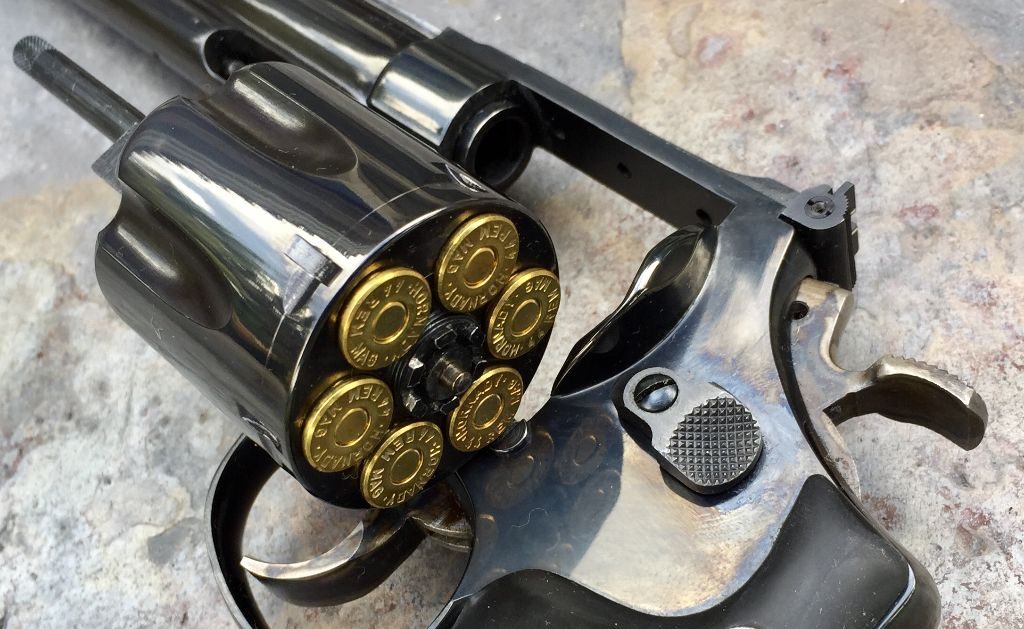
Every time you eject a cartridge from the chamber of an auto, the rim of the case gets marked up by the extractor. After several cycles (or even one, with a sharp-edged extractor), the rim can develop defects that will cause malfunctions in feeding or extraction.
Additionally, every time you chamber that round in the auto after training, you can dent the bullet and push it deeper into the case, as the nose of the bullet strikes the feed ramp on the way to the chamber. If a dent becomes significant enough, it can interrupt proper feeding, and if the bullet is battered enough, the case neck can lose its tension on the bullet. When this happens, the bullet can fall out of the case, and dump loose powder inside the magazine and/or action, setting the stage for a malfunction.
Even more dangerous, the primer can get killed from repeated chamberings (when the anvil gets displaced or the priming compound cracks and flakes away), or a bullet can be pushed back into the case on a round that is chambered repeatedly. If a bullet suffers enough “setback,” it can lead to a tremendous spike in internal case pressures—enough that the case can explode and damage the firearm, or injure the shooter.4 Because of this risk, most manufacturers will only warranty the cartridge for one chambering, and warn that repeated chamberings could create a significant safety hazard.
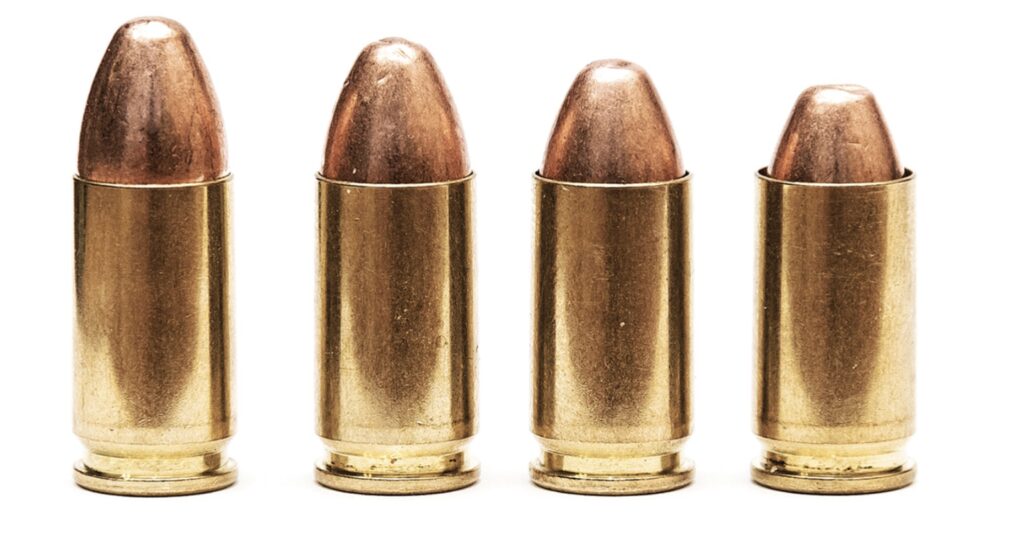
To mitigate this risk, the auto shooter needs to replace the chambered round frequently, and this kind of rotation can put a strain on a shooter’s limited supply of duty ammo. A weekly dry practice regimen could require a shooter to rotate through a whole 50-round box of duty ammo in a year’s time.
By comparison, duty ammunition can be safely unloaded from a revolver and reloaded again without damaging it, or creating a dangerous setback situation. While it’s important to rotate your duty ammunition on a regular basis, you can keep your revolver ammo on duty for a very long time if supplies are tight, with just a little care and caution.
Stretch it out
With a revolver, the elements of dry practice and live fire can also be easily combined at the range, to stretch out your ammunition supply and maximize your training.
You can do this with a variation of the “ball and dummy drill,” as recently promoted by Claude Werner and Rich Grassi. In this drill, you load all the chambers of your revolver’s cylinder with live ammunition, then fire a single round at the target. Once you’ve fired this shot, you pause to open the cylinder and turn it to a random position, before closing it again in preparation for another shot (you can give the cylinder a slow spin, rather than turning it, if you wish, but just make sure the rotation has stopped before you close the cylinder, to avoid damaging your gun).
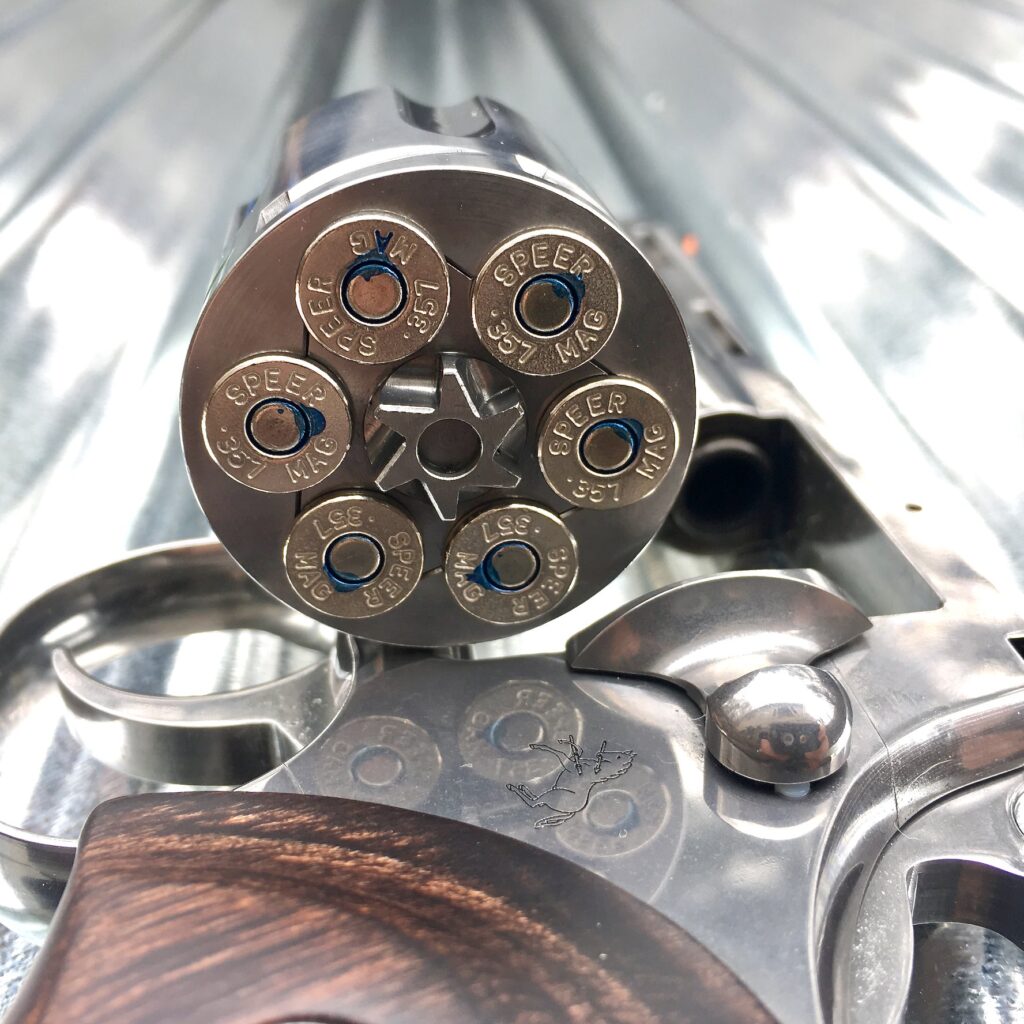
Now that the cylinder is closed, you’ll fire another round from the gun. Because you turned the cylinder, you might get a click instead of a bang on the first trigger press, in which case, you’ll simply stroke the trigger again until you find a live cartridge. When you do, open and spin the cylinder, close, then repeat.
In this fashion, the number of dry fires will increase as you get further into the drill, giving you lots of opportunities to practice good trigger control at no cost. By spinning the cylinder in between each round fired, you can really stretch out the training value of a single cylinder’s worth of ammunition.
You could recreate something similar to this with an auto, but it would be much more complex and the difficulty would detract from the training. The revolver makes this easy and practical, giving it a huge advantage, here.
Celebrate Diversity
Revolvers also have the advantage of being able to safely chamber and fire a wider variety of cartridges than autopistols. This can be a very important factor during an ammunition shortage, when you might not be able to get your preferred type of ammunition.
For example, a revolver chambered for .357 Magnum can safely fire .38 Special cartridges, just as a revolver chambered for .327 Federal Magnum can safely fire .32 H&R Magnum, .32 S&W Long, and .32 S&W as well. In rimfires, a .22 LR revolver can safely handle .22 Long, .22 Short, and .22 CB cartridges, too.
You don’t get that kind of caliber flexibility with an autopistol, which requires magazines, chambers and feed ramps specifically suited for a particular cartridge.
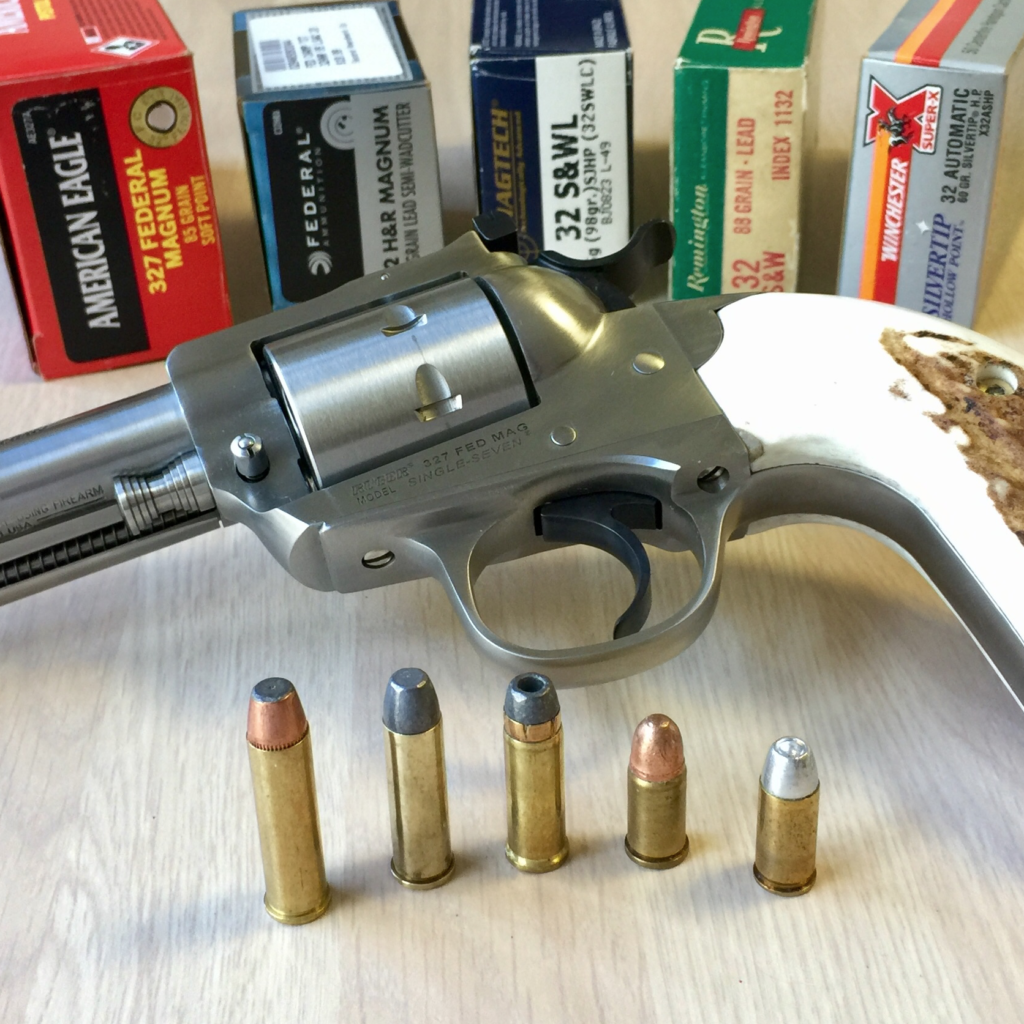
Additionally, a revolver is capable of handling a wide variety of pressure levels, bullet weights and bullet styles within a family of cartridges. In the .38 Special, for example, a revolver can handle the lightest, blunt wadcutter, or the heaviest, round nose bullet. It can also handle standard pressure loads as easily as rounds loaded to +P pressures.
Because autopistols rely on a delicate balance between spring rates (both recoil and magazine) and slide velocity, and require a round to feed from a magazine into a chamber, they’re not as amenable to changes in bullet weights, shapes, velocities and pressures. You’ll find that there are some flavors of ammunition that just won’t function reliably in an auto, even though they are the proper caliber for the gun. In contrast, the revolver will eat up anything you can safely chamber in it, with little need for extensive “reliability testing” to ensure compatibility. An abbreviated test is always recommended to ensure cartridge suitability, but you don’t need to follow the old autopistol adage of shooting several hundred rounds of duty ammo through the gun, just to verify the gun-ammo combination is trustworthy.
These significant revolver advantages may not be enough, by themselves, to warrant their selection over an autopistol, but they certainly don’t hurt when you’re in the middle of a supply crisis like we’re seeing now. Score one for the revolver!
The wheel turns
The future is unpredictable, and there’s no saying how long it will take for this latest product availability crisis to settle down.
As I mentioned previously, my personal belief is that we won’t see it get resolved this year, and I’m not too excited about 2022, either. For those who weren’t part of the culture yet, or simply forgot, the 2013 crisis took about two or three years to abate. Even then, the recovery was incomplete, as it was interrupted by the next crisis cycle in 2016, so if the past is any predictor, you’d better settle in for at least a two-year ride.
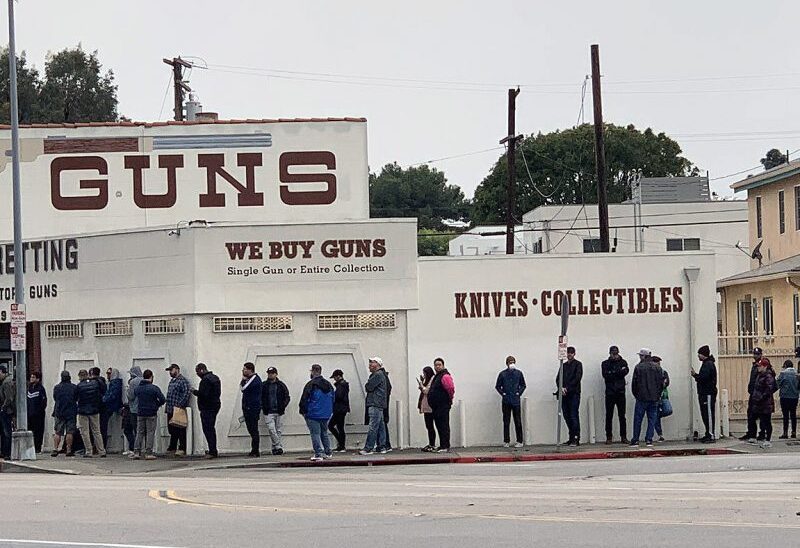
This is especially true, given the record-breaking surge in the number of gun owners, and the significant increase in recreational shooting and hunting participation that has accompanied this growth. Anytime you add another 8+ million consumers to a small market, it’s going to reset the baseline for “normal” economic activity in that market, and that doesn’t happen overnight. It’s simply going to take a while for the market to digest this large influx of new customers, and reach a new equilibrium.
Ain’t seen nothin’ yet?
Of course, a recovery could take longer, if 2021 dishes up more unpleasantness.
As the January 4th introduction of House Resolution 127 indicates, we’re likely to see aggressive attacks on Second Amendment liberties this year, which will fuel and extend the buying surge that created this shortage in the first place. Don’t expect the demand for firearms and ammunition to subside if it looks like politicians will be successful in signing new bans, prohibitions, and restrictions into law.
We saw a dramatic increase in murder and other violent criminal acts in 2020, and it seems unlikely that this trend will abate in 2021, since the underlying conditions have not changed. In many parts of America, a “soft on crime” approach has taken root, while assaults (physical, legal, and budgetary) on police have increased. It’s doubtful that “defunded,” demoralized, and disengaged police will arrest these violent crime trends, which means that the demand for defensive firearms and ammunition is likely to continue, and possibly increase, throughout 2021.
These and other trends indicate that it’s unlikely we’ll see supply catch up with demand in 2021, and indeed, the gap between them could widen. In January 2021 we saw over 2 million guns sold—a new record, and a 75% increase over January 2020–and this trend shows no sign of slowing down.
I’m not sure how all of this will play out, but I’m glad that I’ve got a few good revolvers at hand, to help weather the storm.
I hope you do, too. Keep your heads down, and be safe out there!
*****
Notes:
1.) Ironically, when things turned out unexpectedly, and a more gun-friendly president took office, the skyrocketing market finally burned out, and took a nosedive. The frenzy of buying activity leading up to the election came to a screeching halt, as the gun community breathed a sigh of relief, and tried to pay off all the credit cards they had run up to their limit, in anticipation of the worst.
While the prior two decades had been a seller’s market, that changed overnight, as the “Trump Slump” took hold and the industry was left practically begging customers to buy their products. Guns that had sold for inflated prices just months before, were now piling up so quickly that prices were slashed (remember the $299 S&W Shields, the $450 AR rifles, or the Thanksgiving deals where if you bought a Ruger AR-556, they’d throw in a free Ruger 10/22?). Manufacturers were forced to launch generous rebate and incentive programs, just to generate sales of products that shops had struggled to keep in stock only months before (some of you may remember when you could buy a gun, and get a coupon for a handful of free magazines, or a few boxes of ammunition . . . or the packages that threw in some mags, a loader, a holster, a carrying case, a decoder ring and a coffee grinder). Ammunition that had been in high demand started to pile up in 2016-2019, and prices dropped to levels that we hadn’t seen since the turn of the millennium, with some vendors actually selling ammunition below their cost, just to make room in the warehouse for the next incoming shipment from their supplier.
So, if you want to know why manufacturers don’t “simply build a new factory” to keep up with the market’s current level of demand, this is why. They know a big Bust cycle follows every big Boom, and they don’t want to sink a bunch of resources into a costly factory that will sit idle in a few years;
2.) I should note that I was actually very happy for Sam. He’s a real gentleman and an outstanding holster maker, and I was pleased that the greater gun community was giving him so much of their business. It’s been a tough year for small businesses in America, and I was really glad to see that Sam’s customers were rising to the occasion, and guaranteeing that he wouldn’t have to worry about turning off the lights, anytime soon! Sam, I’ll catch up with you when things settle down–I’m in no rush, and my special project can wait for a time when you have more room on your workbench!
3.) Yes, a shooter with a DA auto could continue pulling the trigger in DA mode, but this isn’t how the gun is designed to work, and the training value is decreased;
4.) Industry testing of .40 S&W cartridges indicates that a bullet setback of just 0.10” can double pressures inside the case—more than enough to cause a dangerous explosion, instead of a normal ignition. https://www.recoilweb.com/bullet-setback-fears-160844.html

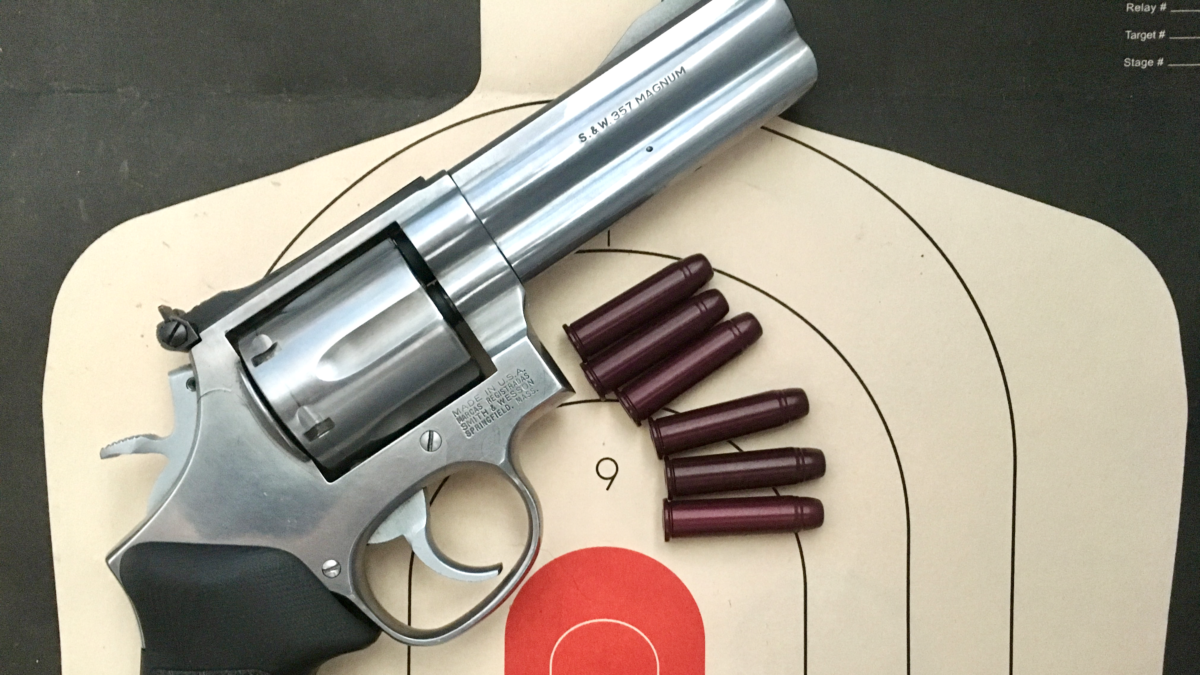
Thank you for the effort that went into this detailed report! I was not aware of the pre-2008 shortages (what can I say, I’m a young’un), so that was interesting for me to learn about. I was also not aware of the increased number of hunters. Most of the other factors I was aware of, but I haven’t seen them all explained in one location.
Additionally, I could be wrong, but I believe dry practice is something that isn’t on a lot of peoples’ radars (or is at best a quaternary or quintary consideration). I think it is great that the topic comes up periodically here to keep it fresh. As you pointed out, revolvers really are the ideal platform for this. I deliberately purchased a DAO autoloader so I would have a bottom feeder that functions as close to possible to my revolvers, and that alleviates the need for the slide to cycle during dry fire, but I still have the issue related to re-chambering rounds. Revolvers are just better in this regard.
Thanks Greyson! I’m guilty of not doing enough dry practice, myself!
Excellent discussion of all the factors that have lead up to a “perfect storm” with the current firearms/ammo shortage. You could probably toss the NRA’s bankruptcy in the mix too. I think similarly with you in having lived through several of these shortages now. The one during 2008 got me into reloading and I have enough components set by to last me through this one. Now is not the time to be buying, 2016-2019 was the time to buy and stock up, and as you said, the market will be favorable again, even if that isn’t until 2022. Along with your excellent suggestion of dry firing, all firearms (revolvers included) will suffer less chance of damage if using snap caps/dummy rounds. A-zoom produces a great product in nearly every caliber and you can still practice reloading drills this way too. Just make sure to have the discipline to triple check the firearm isn’t loaded and your ammo and loaded mags are locked away or in another room when dry firing to avoid accidental discharges. I had one oops with a 22WMR from an NAA mini to scare me straight on that front.
Another option to supplement your skills could be via other shooting sports. My wife and I have probably spent more time shooting archery in 2020 than any year previously. The eye-hand coordination developed from a related discipline helps me to retain shooting skills during an ammo shortage and still offers alot of the same enjoyment and saisfaction I get from my firearms.
Thanks Joshua, those are great observations! Yes, I wholeheartedly endorse the use of snap caps as part of your dry practice, and Justin has written a lot about them in these pages. They’re an excellent tool, and will help to protect your firearm from damage. As you pointed out, it’s essential to follow the safety protocols religiously when doing dry practice, to avoid a tragic mistake!
I loved your comment about “now is not the time to be buying.” Amen, brother! I had many friends that I encouraged to buy ammo during 2016-2019 who didn’t follow my advice, and they’re the ones who are now having to scramble to find ammo, and are paying way too much for it. Live and learn. If you got caught short this time, make a commitment to build up your inventory when prices come down again, so you’ll be ready for the next one, but don’t “buy high” right now if you can avoid it.
I loved the idea about branching off into other sports that aren’t as ammo-intensive. I can definitely see how archery would complement your firearm shooting skills! On a similar note, you don’t have to stick to one kind of gun. If you have a brick of rimfire ammo, a .22 bolt action rifle will give you critical practice with sight alignment, trigger control, and all the basics, even if it doesn’t work like your defensive gun. So will an airsoft, BB, or pellet gun, for that matter. You don’t have to burn a lot of gunpowder to get good training value.
Mike
Funny enough . . . after checking, it appears many places seem to be sold out on snap caps, too! The ammo crisis now extends to dummy ammo!
Just replenished my stock of .22 WMR and .38 Special snap caps last night.
Amazon.
Now, find me some .22 WMR ammo! I’m down to 50 rounds.
Oh Bill, I hate to say it, but rimfire is gonna take a harder hit, since there are even less facilities capable of making it than centerfire ammo! Better ration what you have, carefully.
After the events of the last few months, I’m less and less enthusiastic about purchasing anything via Amazon.
My local small-town gun dealer quoted me a price on the 100-round plastic box of CCI Mini Mags in .22LR, jacketed 40 grain solid point: $55(!!!)
After picking myself up off the floor, I passed on the deal. The way things are going, I hope I don’t regret passing!
Holy cow, Bart! I think he got the decimal point in the wrong place!! Great to see you here.
Very good article Sir! I have to admit, I have always been one of those that treat my ammunition supply like a credit card. If I spend 500 rounds, I try to replenish it right away and make myself whole again. These shortages make that difficult so my live fire training suffers somewhat. I have learned to augment my training by firing a cylinder full utilizing double taps or maybe a failure drill. Minimize the round count and focus on mechanics like practicing the reloads with snap caps in the speedloaders. We will get through this, one way or another. In the meantime, I am glad we have Revolverguy for instructive and entertaining reading. Thank you for all you do!
Thank you Mark! Glad to have you here! I like your method of operation, with respect to resupply.
The sporting goods store I hit up gets a new shipment about once a week. It’s not a bad mix; some times I can pick up some 9mm, sometimes .38 Special, quite often (for some reason) they have .22 shorts, which my SP-101 really loves.
Thanks Robert! That’s a great example of the ammunition flexibility I was talking about. I appreciate that!
Not thrilled about buying through Amazon, either, Mike.
But, when you live out in the middle of nowhere…
Paying the price for living in an extremely firearm-friendly state.
Midway USA has been good to me, as well.
Roger that on the rimfire ammo.
Hence the snap caps.
Always love reading your contributions.
Roger all, Bill! Your situation is definitely better than mine, with respect to gun friendly gubmint. Keep the light on in America for me!
Regarding snap caps . . . since you mentioned the WMR, have you ever used plastic drywall anchors for snap caps in your rimfires? The small ones work great . . . going by memory here, maybe size 4?
Thanks for the kind words!
Mike, the #4s are certainly cheap enough, but I’ve never tried them.
Next trip to the hardware store!
(Don’t need Amazon for that purchase!)
Many thanks,
From the Heartland of America
You bet, Bill. Let me know what you think of them. I’ve actually had one or two autos that would kinda feed them, but they work best in revolvers, for obvious reasons. Very cheap and effective option.
Mike, haven’t gotten the anchors, but did manage to score 200 rounds of .22 Magnum tonight! Happier than a pig in slop.
Other calibers I shoot, .38 Special, .38 Special +P and .357 Magnum have been easy to come by, comparatively.
Thanks again for a great site.
As of this past saturday when I called, Sam Andrews is ONLY @ 11 months backordered on everything. What the hay, good repurposed bovine epidermis is worth waiting for.
I made my own .38 Special ‘snap caps’ — had some old M41 ball ammo from the 1960s laying around. I pulled the bullets out of 2 dozen of the rounds. Emptied the powder, and decapped the primers (for later use). I then drilled a very small hole through the case about 1/3 of the way up from the rim. Cleaned up the drill mess, and used blue Permatex gasket sealer to fill the primer pocket. Forced enough in so that it came through the flash hole and into the case itself. Let it dry, and used a razor blade to trim it level with the case head. Seat and crimp the original 130 gr round nose bullet, and you have an easily identifiable non functional round.
I keep those separate from all other ammo. I’ll take out my wheel gun of choice for practice, empty it of the live rounds, and after two, three, four checks to make sure I have my practice dummies, I retreat to my cave and commence exercises.
I love it! Those sound like the perfect solution for dry practice. I bet they weigh the same as live rounds, too?
Andrews’ work is definitely worth waiting for, but 11 months would take lots of patience. Better to order and forget, then be pleasantly surprised, later!
Yes, that’s the beauty of my practice loads. There’s enough Permatex squirted in the case to make up for the weight of the powder. Practicing speed loading drills is a game that the Revolver has no equal in.
Revolvers are really nice for adding a lot more versatility to dry fire. With my semi-auto I could do timed drills where I draw/present/fire or go from low ready/present/fire for a single repetition before recocking the gun. With the revolver, I can practice that same drill only with followup shots and target transitions. Seems to correspond nicely to range performance too.
You’ve got an excellent site here, learned a lot.
Thanks Snublord, glad you’re enjoying it. Hope you’ll stick around!
“The guy who doesn’t even have a .44 Magnum, will stop buying .44 Magnum ammo, just because it’s still there on the shelf.”
This hit really close to home. I can barely remember when .44 mag was just $35 for 50 rounds.
I’m still struggling with the fact that a brick of .22 LR doesn’t cost $9.99 anymore, and remember when 9mm cost more than .38 Special!
Sears and Monotony Wierd (Montgomery Ward) sold their brand of .22LR – all made by Federal Cartridge – at like $0.49 a box of 50. Occasionally the 500 round brick would go on sale for $4.00. .38 Special was on the order of $7.50 a box of 50 rounds of plain RNL.
9m/m Parabellum was that strange stuff from Europe that was occasionally available through Interarms.
Yes, we had electric lights and indoor plumbing back then
There’s a term that economists use, which I can’t recall just now, which refers to the fact that you establish a mental baseline of what things “should” cost, based on the prices that existed when you first entered a market, or started doing a lot of business in it.
By this measure, I think a brick of .22s (a real brick, please, of 10 cardboard boxes of 50, not a milk carton of jumbled rounds) should cost around $9, a box of 158 grain RNL .38s should cost about $8, and a good DA revolver should cost about $300.
I love looking at old magazines and marveling at the prices things used to sell for. My 1976 LE Handgun Digest lists the MSRP of a Model 19 (blue or nickel) as $167.50, and a Python (blue) as $253 ($282 for nickel). Yes, I understand the effects of inflation, and that these were still relatively expensive items for people in an era when the federal minimum wage was $2.30, but it’s still amazing to see such low figures associated with such excellent products. It’s also disappointing to see which products didn’t survive the ages.
Man I’m just sad I don’t shoot that much anymore. What used to be an every weekend thing is now maybe 3 to 4 times a year. I didn’t even spend $200 on ammo last year.
We, Brazilians, are a long time habitued to short ammo supply, due the high cost and limited purchasing quotes.
Indeed, the revolver is unbeatable in these situations. The old training method with wax/paraffin bullets is very useful -far cheaper than “Simunition” or other modern resources. I´ve trained hundreds of bank security guards (that still uses .38 Special revolvers, like Taurus 82 and Rossi 941) using this method.
The cases are converted to use #209 shotgun primers, less controlled and easier to purchase here. It are also easier to reload with no special tools.
Erick, my dad used to train with these wax bullets, as a policeman in the 60s and 70s. I’d forgotten about them, but you’re right—they could be an excellent training tool. The only difficulty now would be finding the primers. That’s clever to use the more plentiful #209s!
Yeah, some guys use glue sticks as bullets. If you reload, you can use a hot glue gun to make glue bullets in your bullet mold. No powder needed, the primer is enough to propel the glue bullet pretty close to point of aim. Some guys are able to shoot in their basements/garages with hot glue reloads. The glue bullets are reusable several times if you shoot into a box.
I liked the idea of hot glue bullets! I will try!
In the end of 80’s and beggining os 90’s, a Brazilian firm produced a direct copy of Speer plastic ammo, with solid plastic and paintball bullets, but it disappeared from the market in the turn of century.
I had also a Argentinian subcaliber kit named “SPT – Sistema de Práctica de Tiro” (Target Practice System) that allow to fire .177 round pellets in a handgun. But it’s not pratical reassembly the cartridges (unthread, replace the primer and pellet) after 6 shots. It’s merely a curiosity. A CO2 revolver works better.
In countries where center-fire rifles, handguns and ammunition are heavily regulated, shotguns are usually easier to obtain. Modern rifle powders, rifle and pistol primers are virtually impossible to get legally in places like Mexico. Components for shotgun reloading, such as powder, shot and shotgun primers are available in most of the developing world without resorting to the Black Market. Resourceful hunters, farmers and outdoorsmen loaded metallic cartridges using expedient methods during the Great Depression in the USA as well as during WW2 in European Resistance groups. These methods are still used today in developing countries. Four basic considerations must be met:
First, the powder must ignite safely and generate uniform velocities at low loading density, given the large free airspace which results from using small charges in a typical military or sporting rifle cartridge case. Fast-burning pistol or shotgun powders ignite easily and burn uniformly under such conditions and present to no issues if used cautiously for this purpose. Common shotgun powders used in 12-ga. or 16-ga. field loads are well suited for loading pistol and revolver calibers, as well as for assembling small game loads in “deer” or military bolt rifles. Due caution is required to determine a safe and suitable powder charge.
Second, these reduced powder charges must safely and reliably expel the bullet from the barrel! Salvaged rifle powder recovered from pulled-down, military or sporting ammunition is a different breed of cat. Ignition will be erratic if bullet weight is substantially less than those in service rounds, particularly if the reduced powder charge fills less than 2/3 of available case capacity. A fired 7.62x39mm case filled to its mouth with common military rifle powders makes a suitable dip measure to assemble “low recoil, medium velocity” ammunition for the .303 British, 7.62x54R, 7.62mm NATO, .30-’06 or 8mm Mauser, using either gaschecked cast or pulled down military jacketed bullets. Such cartridges produce energy similar to the .30-30 or 7.62×39 and are suitable for most meat hunting, while conserving your much more limited supply of expensive factory loads.
A .357 Magnum or .30 M1 carbine case used similarly as a dip measure produces lower power 5.56 or 7.62x39mm rounds approximating .22 Hornet or .32-20 ballistics for small game shooting. A high school buddy, who lived in South Africa in the 1980s, frequently found caches of 7.62×39 ammunition out in the bush. He had no rifle of that caliber listed on his licence. The drill was to pull down this “illegal” prohibited ammo, saving pulled bullets in one can, and the salvaged powder in another, using theser to assemble .303 ammo for his licensed Enfield to shoot Impala for biltong. The primed 7.62×39 cases were cooked off in a campfire, and later taken into town and sold to a scrap dealer. Steel cases weren’t worth anything, but brass was valuable enough to buy primers he used to reload his .303! The pulled 123-grain 7.62×39 bullets turned around BACKWARDS would expand shoot accurately enough to 50m and were good enough to shoot camp meat for biltong.
Third, any reduced power rifle cartridge must still have sufficient power and accuracy to improve upon the accuracy and effectiveness of a common pistol. The purpose of a reduced power, low noise, low recoil rifle loads is to discreetly forage game without attracting unwanted attention, or for home, ranch or farm defence guard purposes, to reduce the risk of collateral damage in settled areas. The iuntended effective range is from 25 to 50 metres, usually at night, when visibility is limited. A “Cat Sneeze” round of minimum power able to exit the barrel can dispatch small game in very near silence from a rifle and is suitably accurate to kill marauding feral dogs, coyotes or foxes out to 50 yards or metres!
Finally, the “Hard Times Hunter” must load cautiously, such that an inadvertent “double charge” is not sufficient to blow a primer, rupture the cartridge case, cause hard bolt opening or escape of powder gases, which could injure the shooter, permanently damage a rifle or in the worst case, “blow it up!”
The key to exploiting salvaged powder, is to be frugal and careful. The best salvaged reduced load powders are recovered from pulled down misfired shotgun or pistol rounds. A .22 LR case measures about 2.5 grains of Bullseye or 2 grains of TiteGroup. Use the minimum powder charge which ignites reliably and expels the buckshot or light pistol bullet from the barrel. Listen for a uniform report and check the bore whenever a shot does not “sound right” or if you do not actually observe the bullet strike. Subsonic loads with buckshot or bullets which fit, using the minimum charge producing good accuracy define the requirement.
Reduced RIFLE loads using metal JACKETED bullets must attain about 300 m/s (980 fps) to always ensure reliable bore exit. Lead-bullet revolver or pistol ammunition can be loaded down to 230 m/s (750 fps) in a rifle without worry about lodging a bullet in the barrel, while producing lower noise. Soft lead, lubricated bullets in revolvers can be loaded as slow as 200 m/s (650 fps) and will exit a revolver barrel reliably.
When assembling “Cat Sneeze” loads great care is required to prevent inadvertent double charges! Use a powder measure and visually inspect every case with a penlight ensuring no accidental spilled or double-charges.
Exploiting improvised materials and using primitive loading techniques were common after WW2 because dirt poor peasant farmers and poachers had to “make do.” This was common practice in postwar Europe and still is in much of Asia, South America and Africa. When ammunition and reloading components were scarce long after WW2 in Europe, frugal hunters, big game loads were improvised by opening bird shot rounds, remelting the lead and crudely casting buckshot in fisherman’s lead sinker molds, then inserting them and closing the shell. Poachers blended and combined all gleaned, salvaged powder from multiple sources together. During wartime this witches brew included black powder taken from artillery igniter packs, smokeless powder recovered from misfired .22 rimfire, 9mm, 7.65mm or .45 pistol rounds, swollen paper shotgun cartridges and even 81mm or 60mm mortar boosters!
(These days we weigh test charges based on listed data using a fast common powder, such as Bullseye, and then check with a chronograph!)
Weighed powder charges carefully gleaned from disassembled 12-ga. or 16-ga. shotgun shells serve as a baseline for estimating safe charges for most common sporting and military rifle calibers. A typical 12-ga. charge for old-fashioned paper shells assembled with card and vegetable fiber wadding, as was common before about 1960 was 1.5 grams (23 grains) of a fast-burning flaked smokeless powder similar in composition and burning rate to modern Vectan, D20 or GM3, Cheddite Granular, Red Dot, Green Dot or 700X. In modern plastic shells using one-piece plastic wad columns, the equivalent charge is 1.2-1.3 grams (18-20 grains) of a denser spheroidal powder similar to Vectan AS, Cheddite Drago, TiteGroup, W231, or WST.
A powder widely salvaged by postwar Europeans was obtained from US 60mm mortar shell boosters, a Hercules flake powder, called “Infallible,” being very similar in burning rate and composition to modern “duck load” powders such as Unique, Universal, Herco, PB, or WSF.
During wartime a poacher would conduct simple empirical tests with a battlefield pickup rifle, and fashion a dip measure from an empty 9mm pistol case. The test-bed battlefield pickup rifle, usually a Mauser 98K or M91/30 would be tied to a tree, a LONG string attached to the trigger. Then, from a safe distance the careful (and timid) poacher would wait for a thunderstorm before finally jerking the lanyard! If the gun made a satisfying BANG~!, the bolt opened easily, the case looked normal and the primer didn’t fall out, it was a “good” load and it was then time to load five more rounds to go look for camp meat to bring home!
Today in the developing world 1/4 of a 12-ga. charge works for a “Cat Sneeze” load with lead bullets in typical “deer rifle” or military-bolt calibers, or as a full-charge load for large caliber handguns such as the .357 and Magnum, .44-40 or .45 Colt
Similarly 1/3 of a 12-ga. charge reliably expels a standard military weight jacketed bullet from the bore of a .303 British, 7.62x54R, 8mm Mauser or .30-’06. This charge volume MUST not be exceeded in weaker rifles such as the Lee Enfields, converted Vetterlis or ’88 Mauser Commission rifles!
In stronger rifle 1/2 of the 12-ga. charge makes a heavier jacketed load in the Mosin-Nagant, Springfield, Type 99 Jap, ’98 Mauser and most bposr WW2 sporting rifles, approximating .32-40 Winchester ballistics in the 7.62 NATO, 7.62x54R, .30’06 or 8mm. It also provides a mild smokeless load for large bore sporting using lead bullets in cartridges such as the .348 Winchester, .35 Whelen, .375 H&H, .444 Marlin or .45-70.
A fired .32 ACP cartridge case makes a dip measure which throws about 6 grains of Bullseye, 6.5 grains of 231, or 4.2 grains of Red Dot which are safe and satisfactory minimum small game loads with standard weight jacketed bullet for small capacity military rifles from the 5.56, and .300 Blackout to the 7.62×39. These light charges work great for low noise “Cat Sneeze” loads with soft lubricated lead bullets in the 7.62 NATO, 7.62x54R Russian, .30-’06 or 8mm Mauser. Very light charges might not reliably expel jacketed bullets, so check the bore if anything sounds abnormal or you don’t see the impact.
A Brownell’s Squibb Rod turned onto a Dewey cleaning rod and tapped lightly and persistently with a dead blow lead hammer is the safe way to remove a stuck jacketed bullet, after flooding the bore with Kroil.
A fired 9mm Parabellum case makes a dip measure which throws about 8.2 grains of Bullseye, 7.5 grains of Unique or Granular Cheddite, 7 grains of Hodgdon Universal or 10 grains of Vectan GM3, TiteGroup, WSL or WSF. These powders are best for loading reduced loads with jacketed bullets in cases of 7.62 NATO, .303 British and larger.
To load lubricated lead bullets use the same 9mm dip measure to drop about 7 grains of PB, 5.5 grains of Red Dot, 6 grains of 700-X or Hodgdon Clays, or 6.5 grains of Herco, for subsonic, lead-bullet “Cat Sneeze” in the 7.62 NATO to .30-’06 and 8mm Mauser.
To reload fired Berdan cases for reduced loads, the firing pin indent of the fired Berdan primer cup is drilled entirely through the solid web of the cartridge case using a 50 Gage (1.8mm) drill. The hole drilled in the primer cup then carefully is enlarged with a 6 gage (5.2mm) drill, taking care to not remove metal in the web of the case, other than any radius remaining of the Berdan primer “anvil” formed in the case head.
If all you have are large pistol primers, these can be safely used in very light rifle loads, instead of rifle primers. Indeed, the thinner cup of a pistol primer gives an indication of pressure, because if a pistol primer flattens, punctures or leaks in firing a reduced rifle load, you know that you have used too much powder! If you went too far with the 6 gage drill so that standard rifle or pistol primers fit too deep or loosely, all is not lost. Convert the case to use shotshell primers, which may be more common in some places, by running the 6 gage drill entirely through the case web. While supporting the interior of the case with a piece of pipe, swage the primer pocket to shape using a cone shaped mandrel made from the shank of a # 14 flat head wood screw to reshape the pocket to accept a 209 size shotshell primer. Select a screw whose shank is of full dimension, then cut off the threads. With a patience and practice you can chuck the remains of the screw in a hand drill and radius the cutoff end with a bench grinder. This takes some fussing, but you only need to make one. To use the mandrel, insert a short piece of pipe into the new hull and drive it over the mandrel with a hammer. Whack it hard enough to allow a new shotshell primer to seat flush with the base of the hull. Fired cases reloaded with shotshell primers are easily deprimed using a piece of ¼” rod and a mallet.
(Cases converted to use shotshell primers can be used safely only with light loads below 1500 fps, never for full charges!)
Bulk lubing of cast bullets or buckshot is done most easily using Lee Liquid Alox. Dilute scarce commercial lubes with equal parts of mineral spirits or paint thinner to make it go farther.
You need very little bullet lube in subsonic loads. A practical expedient bullet lube is to dissolve dried up odds and ends paste floor wax or shoe polish in equal parts by liquid volume of mineral spirits, tumbling on the same way. In casting buckshot or light bullets for low velocity loads you do not need or even want hard alloy. Any soft scrap lead you can scratch with your thumbnail which casts well is fine.
A frequent question involves loading buckshot for “Cat Sneeze” loads. Common US 00 or British SG buckshot is nominally .33” diameter and is too large to load in .30 cal. rifles unless it is sized first. Unsized this works fine in the typical 8mm Mauser. To improvise a .30 cal. sizing die take a 1/2″ thick piece of aluminum, brass or mild steel plate. Drill a 1/4″ pilot hole entirely through the plate, then enlarge the 1/4″ pilot hole in stages successively with a 9/32″, M or N letter drill, then finally with a 5/16″, nominally .3125″. Then countersink, deburr and polish the chamfered hole with emery cloth. I recommend drilling a 3/8″ hole through your bench top and then attaching a threaded jar lid with matching hole under your work bench.
Position and C-clamp your improvised plate sizer die over the hole, lightly oil your buckshot, drop them one at a time onto the countersunk hole, and smack each through with a 5/16″ punch and a plastic hammer into your storage jar. This works for .32 pistol bullets too! A 5/16″ hole works fine for .32 ACP, S&W Long and .32-20.
US 0 or Italian 10/0 buckshot is about .32 inch and fits snugly in a fired .30 cal. case neck. They usually chamber easily IF your seating die reduces the outside case neck diameter to about .340″ or so. 0 buckshot works very well in .32 revolvers and pistols and in “near .30 caliber” rifle cases such as the .310 Cadet, .303 British and 7.62×39 or 7.62x54R.
US #1 or British Special Sg buckshot is nominally .30 caliber, but due to loose tolerances on buckshot, may be too small to effectively take the rifling. If too small to fit tightly into the cartridge case, smack it lightly against a steel plate with your plastic hammer, then run it through the sizer die to make little lead “hockey pucks” which can be stacked in pairs in a .30-’06 or 7.62×54 case, or loaded singly in the 7.62×39, .303 British or 7.62 NATO.
I recommend 0 buckshot for assembling small game loads, using the buckshot straight out of the bag as-is. If all you have is 00, run it through a .311″-.313″ sizer die first.
A dip measure fashioned from a .22 Long Rifle fired case throws about 2.5-2.8 grains of Bullseye, 2.4 grains of Unique, 3.0 grains of 231, Hodgdon Universal, or HP38, or 4 grains of Vectan AS, TiteGroup or WSL. This represents about the minimum powder charge which reliably expels a buckshot reliably from a rifle barrel in larger cases such as the .303 British, 7.62 NATO, 7.62x54R, .30-’06 and 8mm Mauser. It makes a quiet and effective, good short range small game load for use within 25 yards. The same charge can be used safely in small rifle cases such as the 7.62×39, and .30-30, but will be a bit louder.
You can safely substitute soft lead .32 pistol or revolver bullets of 100 grains or less. A heavier lead or any jacketed bullet, may “stick” in the bore when attempting “Cat Sneeze.” Lightly oiling the bore, then removing the excess oil with one dry patch reduces risk of this.
To load buckshot simply, decap your fired cases with an icepick. Reprime by placing a fresh primer open face up on a clean, flat steel plate, centering the primer pocket over the primer, GENTLY tapping the primer in by inserting a 1/4″, non-sparking brass rod through the case neck until it rests against the inside solid web of the case head, (or ¼” ID pipe if using shotshell primers), urging the primer into its pocket with a few light taps of a plastic hammer, until it is flush with the case head.
Use needle-nosed pliers to gently reshape any dents in the case mouth, until it is round. Use a countersink turned with the fingers to gently inside deburr the inside wire edge of the case mouth. Solder an empty .22 LR case onto a bent copper wire to serve as a powder measure.
Measure powder charges by pouring about ½ cup of powder at a time into a small coffee cup or jar, filling the dip measure by pushing it down into the powder and letting the powder flow into the measure of its own weight, by gravity only. Slowly raise the measure up over the mouth of the jar, then strike the powder level across the top of the measure with a pen knife, razor blade or card. Then carefully pour the measured powder charge into your primed case.
Start the sized buckshot into the case mouth with your thumb. If necessary, place the case head against a block of wood and gently tap the buckshot flush with the case mouth using your plastic hammer. Smear any available fat, grease, wax or tallow over the ball to fill the gap between the case mouth and the radius of the seated ball. This lubricates the bullet. Also smear a thin film around and over the primer to waterproof the cartridge.
If your rifle is sighted in for full charge hunting or military ammunition, try the buckshot load using the same sight setting at 50 feet. If you can hit a bottle cap at 50 feet with that sight setting, you are done.
It is common for very light loads to hit “low.” If sight adjustment is needed to hit your target, raise the rear sight a notch at a time and then try again. A realistic accuracy expectation firing typical milsurp rifles with iron sights is a to hit a wine cork or bottle cap at 20 metres, a Bega cheese tin at 25 metres or a 500ml Lager can at 50 metres. Scoped hunting rifles will do much better! My scoped Mosin-Nagants are good enough for silent 100 metre, 10cm five-shot groups or better, with either buckshot or cast lead .32 ACP bullets with nearly silent Cat Sneeze loads , using 500 metre sight dope for full charge jacketed loads.
Now after the importation of cheap surplus ammo, primers and powder is outlawed, you can carry on like a WW2 Partisan!
My goodness, Ed! This is a graduate-level review of reloading in times of scarcity! Thank you so much for the tremendous effort, here. Your comprehensive knowledge of all things “gun” is without peer, and I appreciate you sharing it with the RevolverGuy audience.
Here in Brazil, muzzle-loading homemade shotguns are still used by hunters in poor and isolated areas, like small villages in Amazon forest. Many of these guns are made from a VW Kombi/Bus steering bar, that has a 28-gauge.
Black powder is poorly controlled. It can be obtained from fireworks or even in religious articles stores, because some African religions (that went to Brazil during slavery period) uses it on rituals.
In a emergency, even toy caps can make it fire!
In these days of dempanic ammo shortages, a revolver is as close to a universal gun as you can own.
After the tender ministrations of TK Customs, my EDC S&W 649 (and my bedside 686-Plus) will accept, and accurately shoot:
– .357 Mag, loaded via moon clips, speed loaders, speed strips, or loose rounds
– .38 (+p or plain), also loaded as above
– 9MM, albeit only loaded with a moon clip
My actual carry load is a clip of 5@ Hornady 9MM critical defense; plus 6@ .38+P CD in a speed strips, plus [email protected] CD plus in a second strip, plus an extra (empty) 9MM clip on my key ring. IF I ever have to use it for real, CSI could be REALLY confused!
I’m also kind of fond of my S&W Governor (.45ACP, .45 Long Colt, and/or .410); but th those rounds are more expensive, and at the latter two are harder to find. Also that gun is too big and bulky for regular (concealed) carry.
* PS: if even 9mm aren’t available, most .380s will also fit on a 9MM clip, and shoot!
That’s interesting, Larry. The 649, being a .357, sure gave you some extra flexibility.
I’m curious about your reasoning behind carrying both .38 Spl and .357 Mag ammo in speed strips. Also, what’s the role of the empty clip on the key ring? Has it withstood being bent or damaged while on there?
Thanks for reading.
Mike,
I actually started “my CCW journey” with a 638, because the shrouded hammer is snag-free in the pocket, but allows single action if time permits, and/or distance/accuracy demands.
I upgraded to the 649 primarily for the extra sturdiness and weight of the steel .357, and for that extra 1/4″ of barrel/sight radius.
When TK started offering the 9mm moonclip upgrade at $300, I justified that cost based on the price difference between 9 and 38 ammo; it paid for itself in under a year. Also, when I compete or train, the shorter, clipped 9mm rounds both load and UNLOAD more surely than 38s (even clipped 38s); and much more so than 357s.
For EDC carry, all the great thinkers say I must carry two reloads! However, both moonclips and speed loaders (with their associated carriers) are bulky, obtrusive, and fragile. Also, I’ve yet to discover a single instance where a CITIZEN (vs an LE) actually had to reload DURING an actual fight.
Thus, just in case, I carry a strip (of 7) 38s, not so much for a reload, but for my after-action drill. And comes the zombie apocalypse, and because the strip pouch holds two, my second reload -aka LAST STAND! – is .357.
The second 9mm clip on the key ring is really just another “lucky charm”. It takes up essentially zero space on the keyring, and if I have to scavenge or borrow ammo, 9s are far more common. I have found that TK’s 9mm clips are also thicker (.032″) and sturdier than those for 38/357; and they can be loaded and reloaded without tools. And as I gaze upon the one currently on my keys, there’s no sign of bending.
BUT, now you’ve got me concerned. So, I’ll put this “charm” in the mix on my next range visit, to verify its reliable operation; and will report back if I encounter any problems.
And thank YOU, BTW, for this blog! Always worth the read!
Glad you’re enjoying it, Larry!
The OEM 9mm clips for the LCR are not as sturdy as the TK product, and wouldn’t last a week on my keyring, particularly since I’ve got a Fenix flashlight and mini Leatherman on there, in addition to the keys.
We’re in agreement that a reload is important to carry, but it’s unlikely that you will have the opportunity to conduct a reload during a fight. The strip loaders are best seen as tools for administrative loading, after the dust has settled, I think.
Thanks for reading and commenting!
Recently, I knew that ammo shortage will affect Brazil too. Our industry is focused on US demand, and will export all production that it could.
There’s a CBC official communicate about lack of reloading primers. Powder and ammo lack are previsible up to end of year.